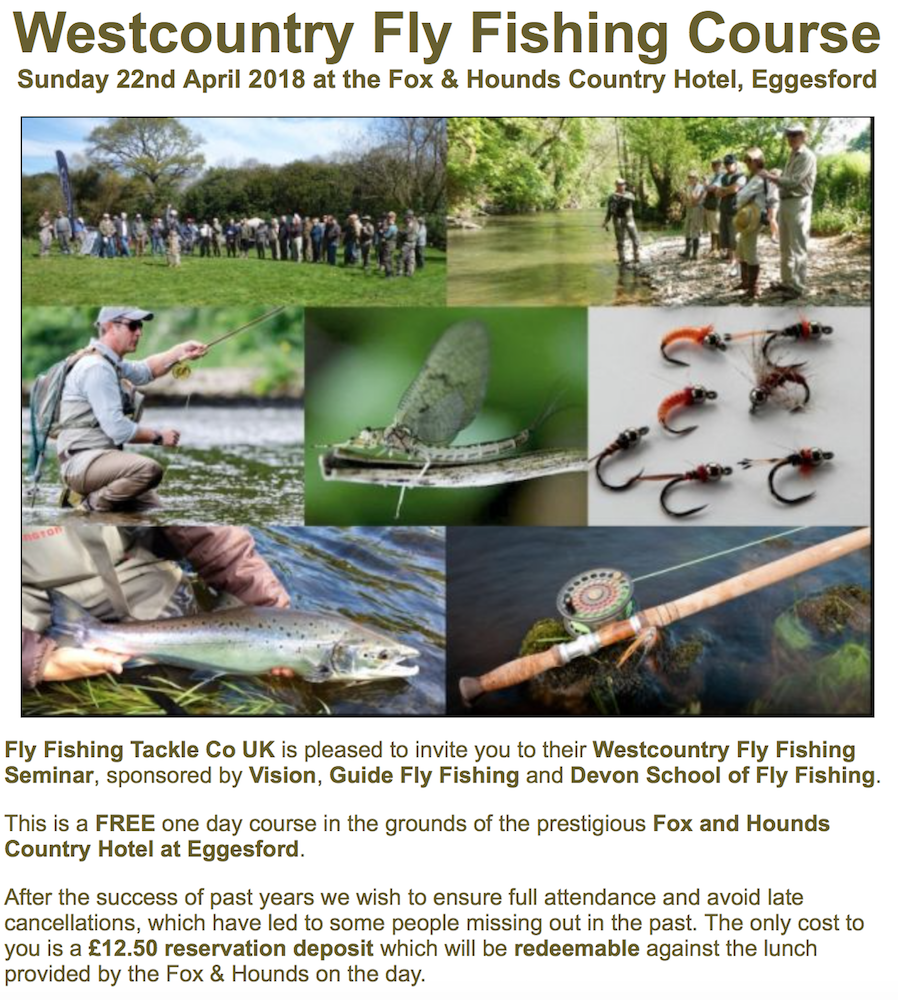
I attended this event last year and it was a really great day out with plenty of learning for both newcomer and seasoned angler. See link to last years review:-


I attended this event last year and it was a really great day out with plenty of learning for both newcomer and seasoned angler. See link to last years review:-

North Devon Fly Fishing enthusiasts have new a venue to fish that offers catch and release fishing for big brown trout along with catch and keep rainbow trout. The lake is approximately 1.5 acres and is close to River Yeo where day tickets are also available for wild brown trout and the occasional sea trout. A catch and release ticket is £20 per day and a four fish rainbow ticket £30. Owner Nigel Early is applying for Trout Master status at the venue. Nigel Early – [email protected]
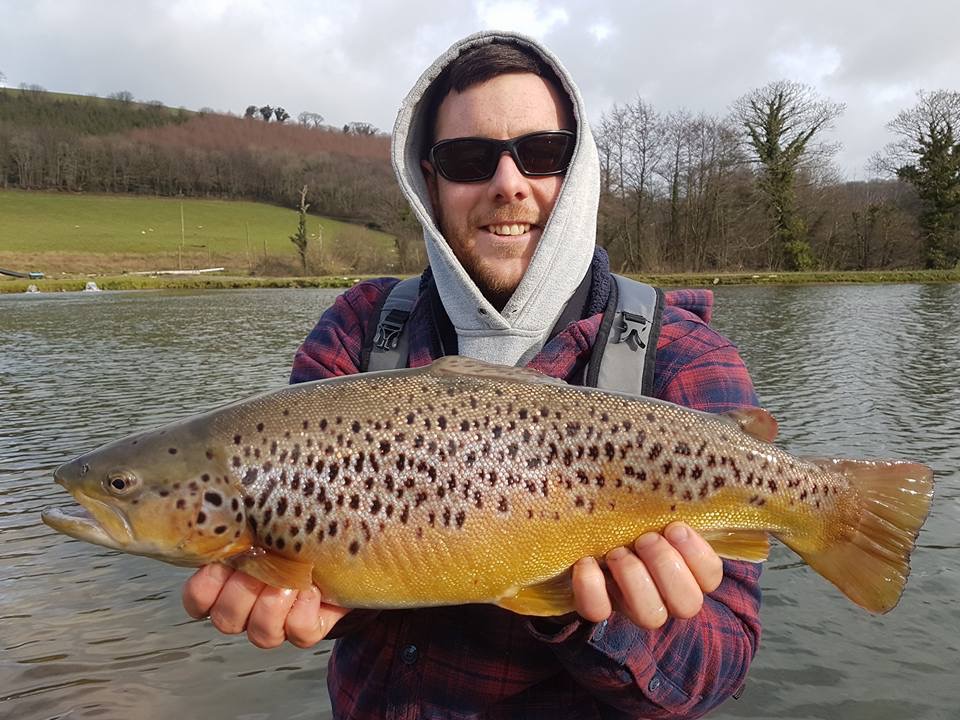
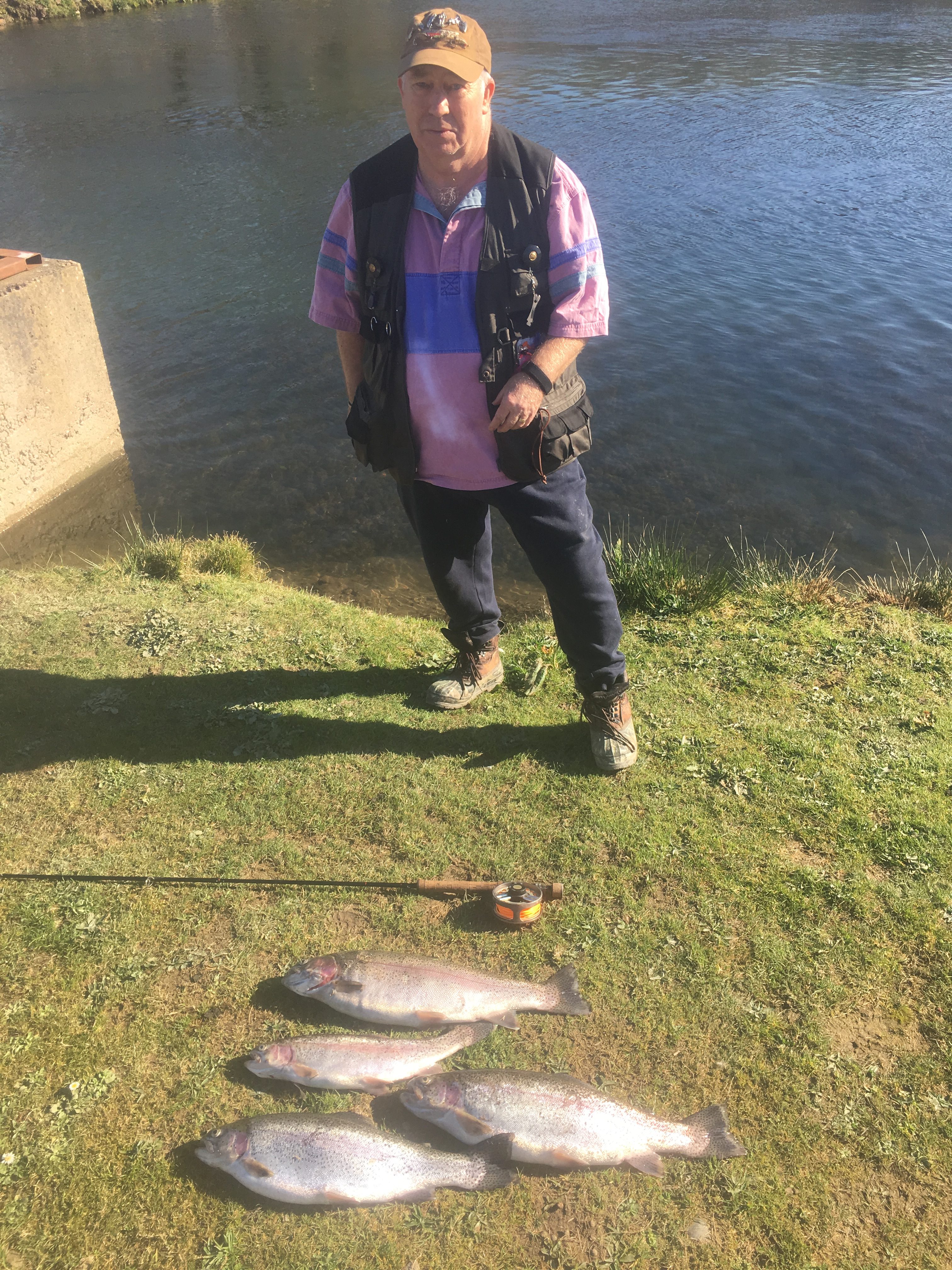
Philip Smith enjoyed a successful trip to Wimbleball Fishery where he found the fish cooperating despite the challenging conditions.
“Tidy bag of fish to 3lb 11oz today, caught in driving snow, a cold northerly wind and 0 degrees! Lots of fish in Ruggs, taking small black nymphs and buzzers on a floater. Things are looking good for Wimbleball, wishing Mark and the team every success. Will be back soon..”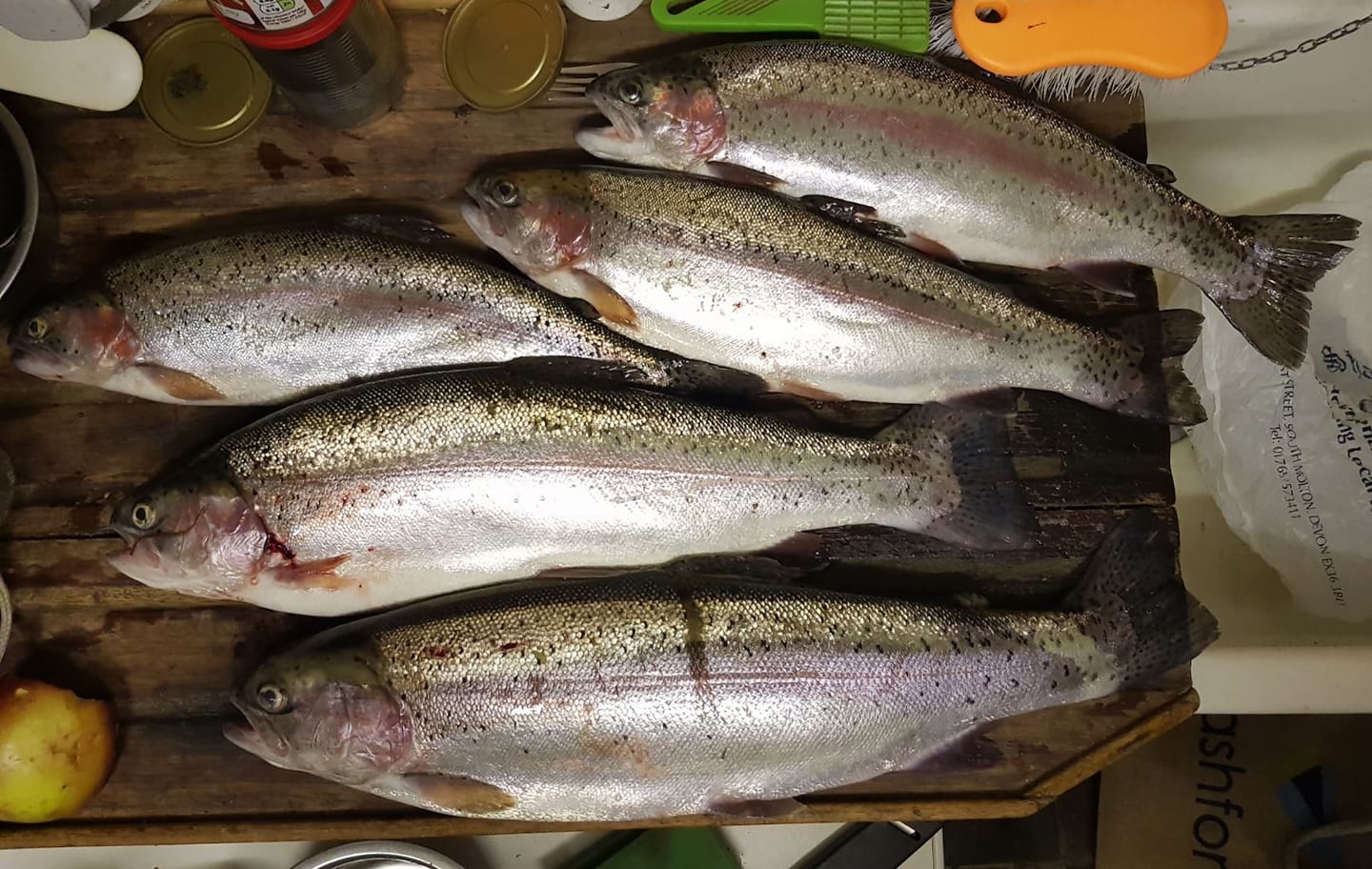
Peter Duckett also braved the weather conditions; caught and kept his 2 on a catch and release ticket and then went on to catch another 16 Rainbows between 2lb 8oz – 4lb 12oz and also lost 10.
He also banked 2 fine browns of which the largest was estimated at 4lb 12oz.
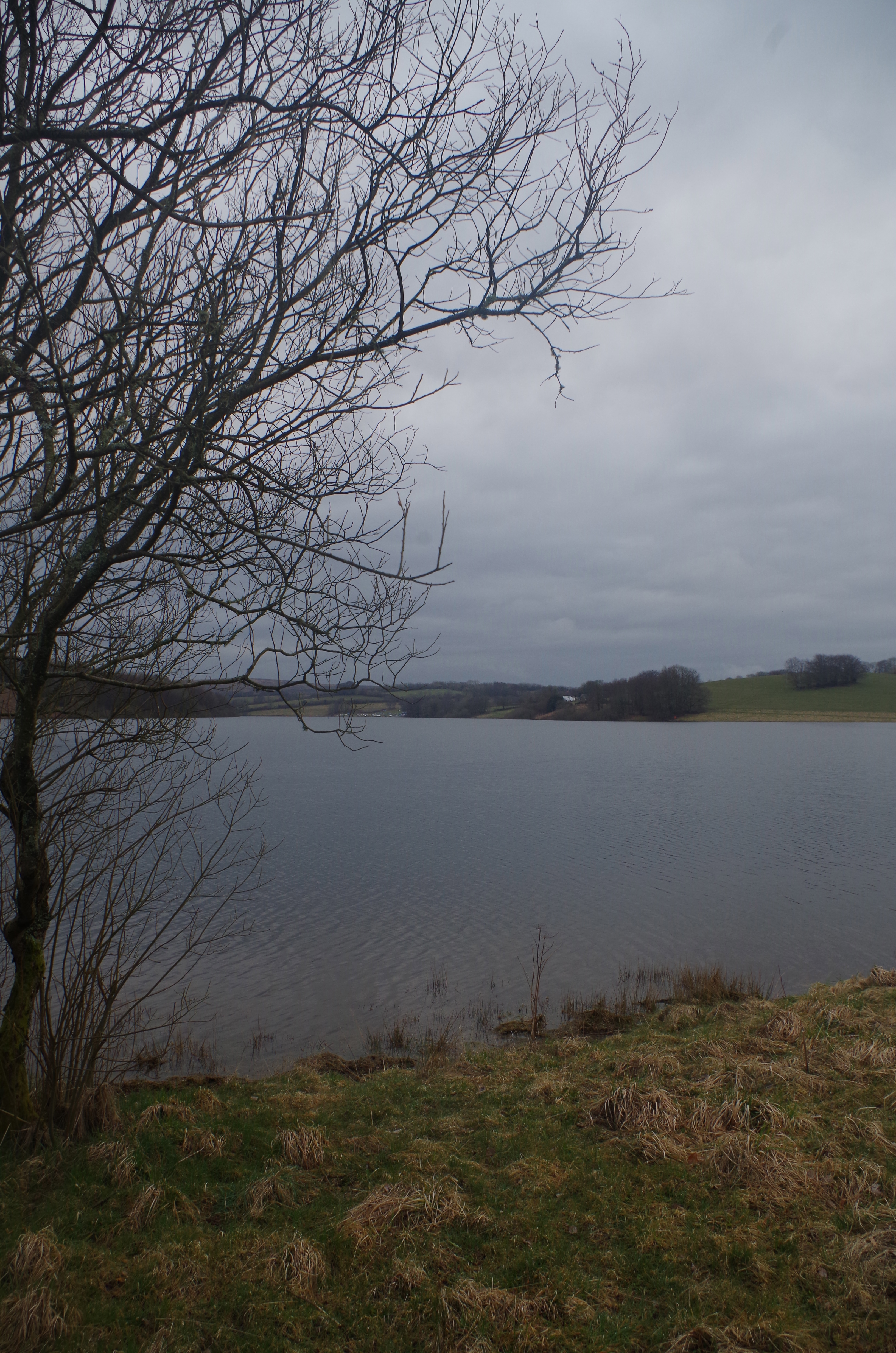
The bad weather endured throughout March has not been good news for fishery owners as Nick Hart Reports in his latest news brief from Exe Valley Fishery. It is to be hoped that springs warmth soon descends to encourage anglers out to the waters edge.
(Below )John Slaven with an Exe Valley Trout – one of just 44 anglers who fished at Exe Valley during March!
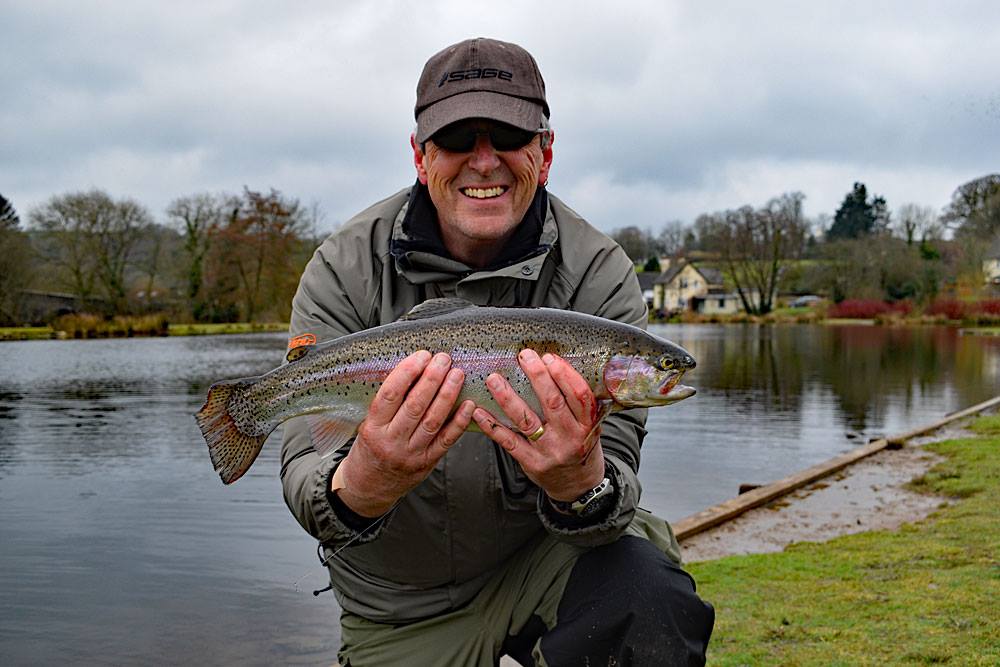
The weather during the last few weeks has resulted in our quietest March on record with just 44 anglers visiting (yes, that’s correct …just 44!) … 11 of them for the Troutmasters match which had to be rescheduled due to snow. Despite the lack of customers, we continue to maintain and stock the fishery as always, shown in the catch figures of 153 fish caught by the 44 anglers up to 29th March resulting in a rod average of 3.5.With the continued changeable conditions and lack of footfall we have regrettably taken the decision to delay the reopening of Lobbs Lake until such time that we feel the venue will have the support required to operate the lake on a day to day basis.
The River Taw Fisheries Association held their Annual General Meeting at High Bullen Hotel on Friday March 23rd. Chairman Alex Gibson reported on the 2017 season when approximately 286 salmon were landed and 214 sea trout. The statistic that immediately raised concern was the dramatic drop in sea trout numbers. It is to be hoped that this is one of nature’s cyclical fluctuations and not something more sinister. The good news was a healthy number of brown trout reported by anglers from the Taw catchment.
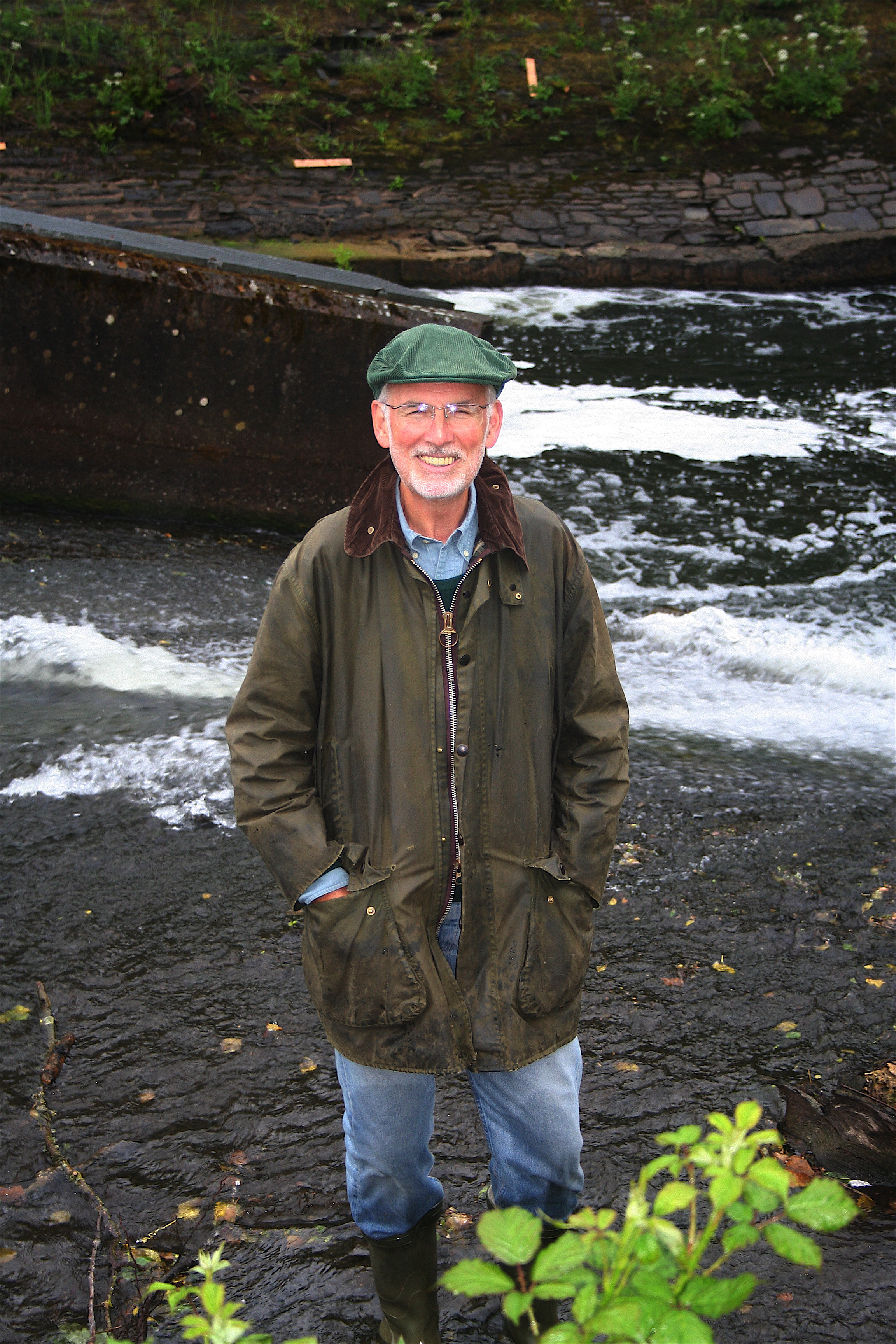
High Impact Enforcement Officer Paul Carter gave an update on the latest news regarding netting bye laws and proposed regulations to safeguard future salmon stocks. He emphasized the importance of anglers reporting any potential pollution’s or illegal fishing via the Environment Agency’s hotline: – 0800 807060.
Anglers are encouraged to respond to the latest consultation regarding the proposals. Via the following link:-
https://consult.environment-agency.gov.uk/fisheries/proposed-national-salmon-byelaws/
There was some encouraging news in that redd counts on the Upper Taw had been encouraging compared to recent seasons. South Molton & District Angling Club gave valuable help to carry out observation on the River Bray under guidance from Paul Carter and plan to carry out an annual redd count from now on.
Bill Beaumont, Senior Fisheries Scientist, Game and Wildlife Conservation Trust, gave an enlightening talk entitled; “Salmon and Silt-A Recipe for Disaster”. Whilst much of the data presented was from the River Frome in Dorset it had a great deal of relevance to our own local rivers. There is an acknowledgement that marine survival is a major factor that we have little control over. For this reason the focus needs to be on ensuring the salmon and sea trout have a healthy habitat in which to breed. Farming practices are a key concern with silt run off, insecticides, herbicides and fertilizers all ingredients that can cause significant damage to the river environment. Education is a major factor in this area with retaining what is put on the land beneficial economically. What is the point in spending thousands of pounds on treatments to see it all wash off into the river?
There are numerous ways that farming practice can be modified to protect the waterways. Including catch crops to bind the soil and keep it in place, ploughing across slopes and fencing to reduce cattle access to the river.
The basic message is that we need to clean up our act. Find the problems, identify the causes and discover the solutions. To do this we need political will power to provide finance. Education combined with financial reward for good practice. This has to be backed up by enforcement ensuring that there is a significant cost to breaking the rules.
Bill Beaumont’s in depth presentation highlighted many issues that can impact upon salmon and sea trout. Mapping the migration of adult salmon and sea trout and parr and smolts is vital in understanding where losses are highest. With this knowledge targeted effort can bring success stemming the decline in these iconic migratory fish.
A few issues highlighted included; Marine – By catches of smolts, Over-fishing of food fish, Competition for food from herrings etc, Marine temperature change. Freshwater – Variable spawning success, Predation from birds, fish, mink and otters, Water abstraction, less flushing of gravels, Land-use (as previously mentioned),
http://www.gwct.org.uk /fishing/research/
Chairman Alex Gibson highlighted widespread concern amongst members regarding the potential breaches of compliance at many of the areas sewage treatment works. With increasing housing development within the region there is undoubtedly a need for significant investment to ensure that wastewater is adequately treated. Once again if any potential pollution’s are observed then the E-A hotline 0800 807060 should be used.
Anglers are at the forefront of conservation on rivers and are in a position to spot indications of issues unlikely to be detected by general members of the public. Guests at the meeting included members of the River Torridge Fishery Association who work hand in hand with the Taw fishers on many issues common to both rivers that share the same estuary mouth. An area of grave concern is the Northam Landfill site where coastal erosion is threatening to release many tons of potentially toxic material into the lower estuary
The AGM was closely followed by the associations annual auction that is a significant fund raising event in the calendar. All monies received help fund vital work on the river system including surveys and improvement work by the West Country Rivers Trust.
The evenings events and coming season are always debated in great depth during the delicious meal that follows.
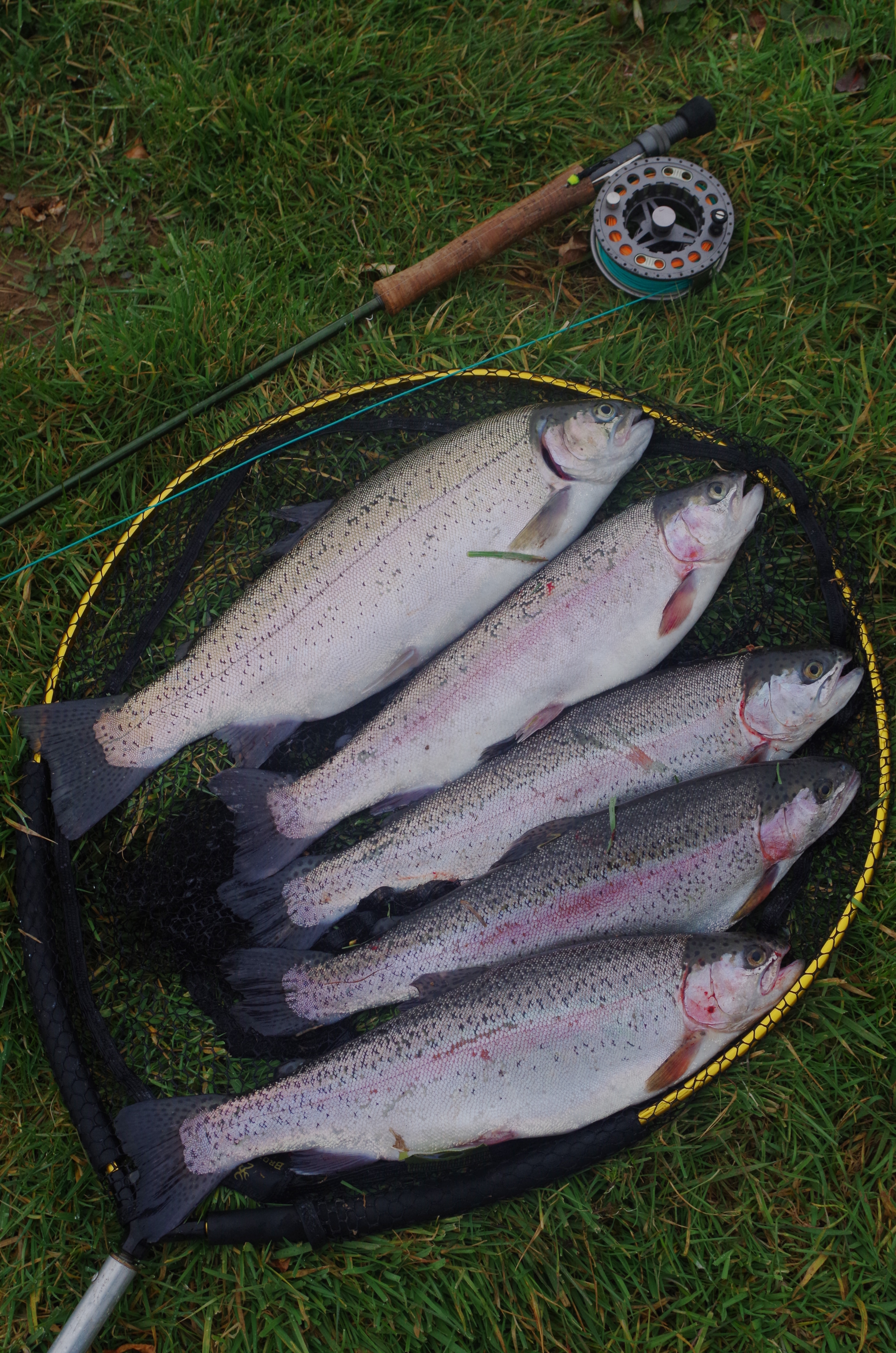
Wimbeball Reservoir reopened under new management on Friday 23rd March and visiting anglers were treated to some fine sport with pristine conditioned hard fighting rainbow trout that averaged well over 2lb. Adam Westcott banked the best fish of the day a fine rainbow of 5lb 12oz that topped a five fish limit bag of close to 20lb. J. Glanfield registered a return of five for 20lb 5oz and G.T Benson five for 18lb 2oz. Anglers practicing catch and release enjoyed frequently bent rods with up to fifteen fish per rod. A wide range of patterns worked well with small dark lures amongst the most successful.
I visited the fishery on Saturday March 24th eager to reacquaint myself with a long time favourite venue. Like many South West Anglers I was very disappointed when South West Lakes Trust downgraded the fishery in 2016 ceasing the stocking of rainbow trout. This was a huge blow to Fly Fishing in the area with the 374acre lake that was built in the 1970’s providing traditional reservoir trout fishing for many years. The Dam straddles the River Haddeo a tributary of the river Exe and is surrounded by stunning Exmoor scenery.
Wimbeball Fly Fishery is now under the fresh stewardship of Mark Underhill an established Fish Farmer and his wife Trudy. I met with Mark at the Fishery permit hut and had an in-depth discussion on the complex world of trout rearing.
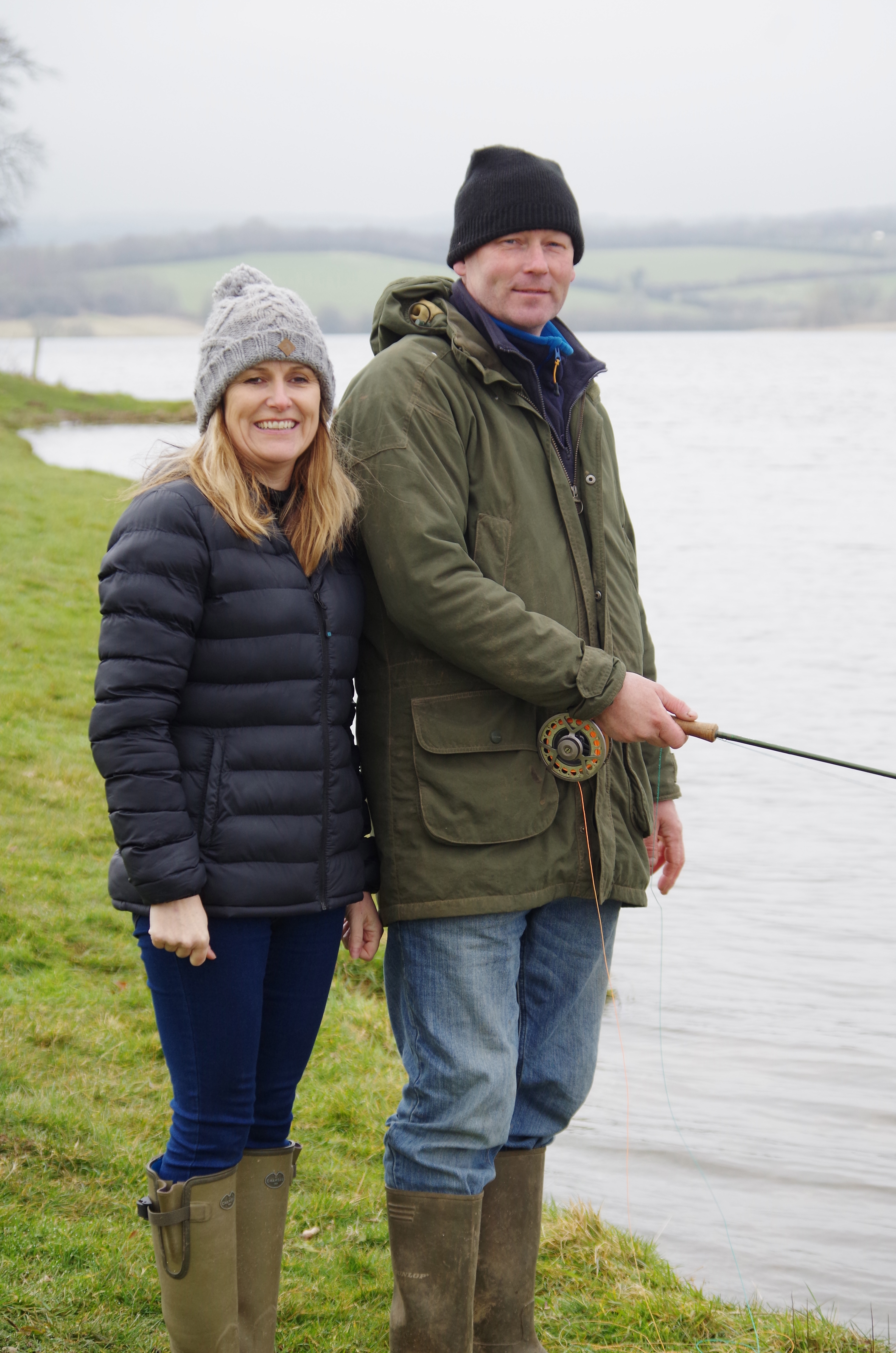
Fortunately Mark is a passionate angler and has an understanding of what anglers want from their day at the waters edge. Mark told me that he was delighted with the opening day when all of the fourteen anglers attended enjoyed great sport with the freshly stocked trout that averaged three pounds with plenty of trout between 4lb and 5lb. A five fish ticket is excellent value at £25 for five fish with an option to practice catch and release at the same price with the first two fish caught to be retained with barb-less hooks mandatory.
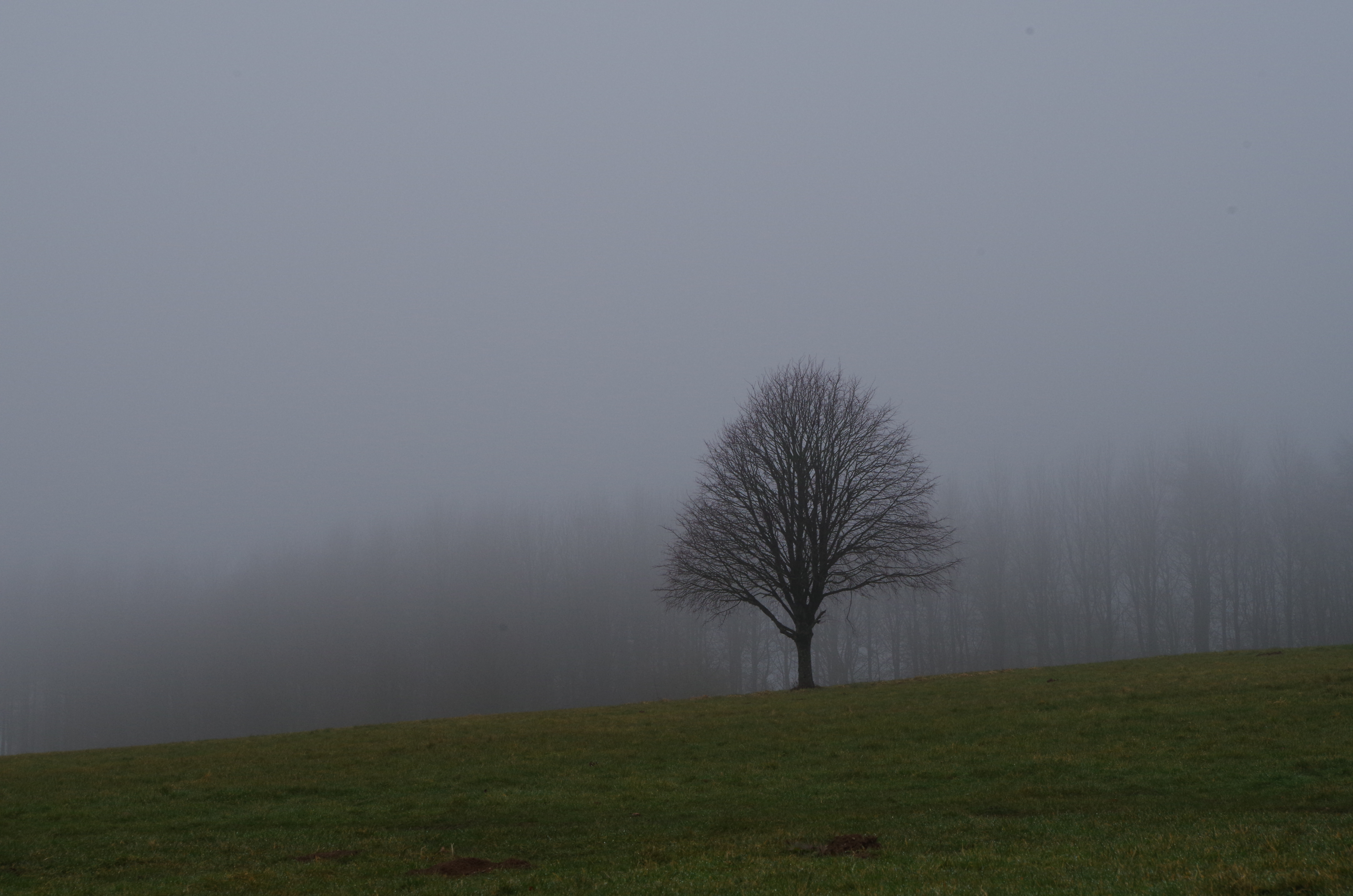
It was a cold dank morning when I arrived with Exmoor draped in mist and the car thermometer reading just 2 degrees C. After my enlightening chat with Mark I set off for the waters edge as the morning mist started to lift. Early season rainbows are not generally hard to catch with location the key. Based upon the previous days reports I decided to fish the Sailing Club Bay moving to other well-known areas if success was not forthcoming.
I had set up two rods one with a fast sink line and the other with an intermediate. To the fast sink line had tied an 8lb leader tipped with a black lure with long marabou tail and fluorescent green head. It was this outfit that I started with fishing the fly deep with a steady retrieve. After ten minutes I felt that electrifying tug as a trout attacked the lure. To my surprise I glimpsed a flash of golden flanks as a beautiful wild brown trout flashed on the line before being drawn over the waiting net. I admired my prize for moment before taking a portrait and slipping the prize back into the chill waters.
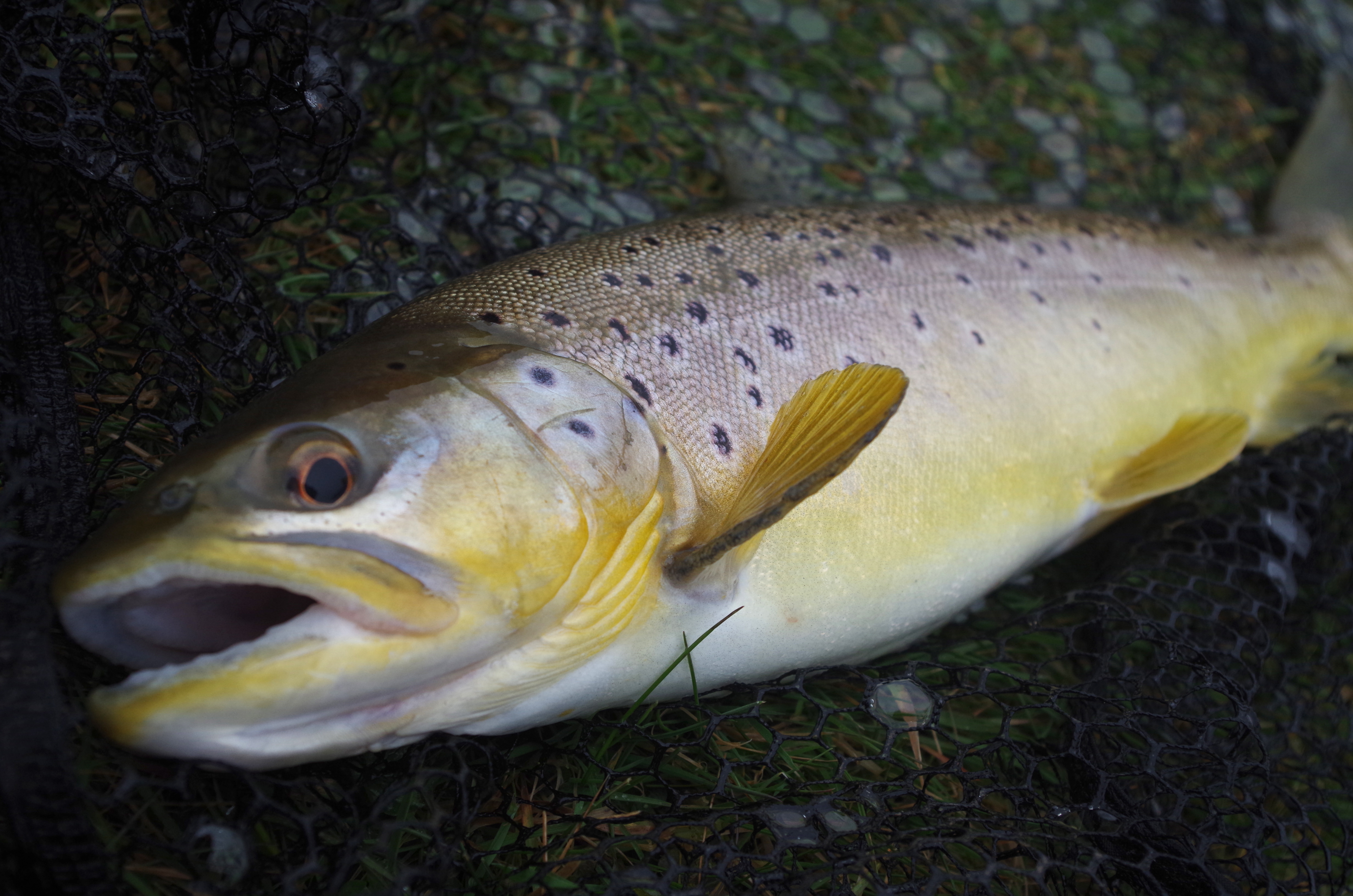
Whilst I love to fish a floating line and a team of nymphs later in the season I also relish this early season fishing that lacks the finesse of the warmer days. There is something particularly thrilling about that moment a trout hits the lure.
It was perhaps ten minutes before I caught my first rainbow of the day a hard fighting full tailed two-pounder. Mark had wondered down to see how I was faring captured the fish and I on camera.
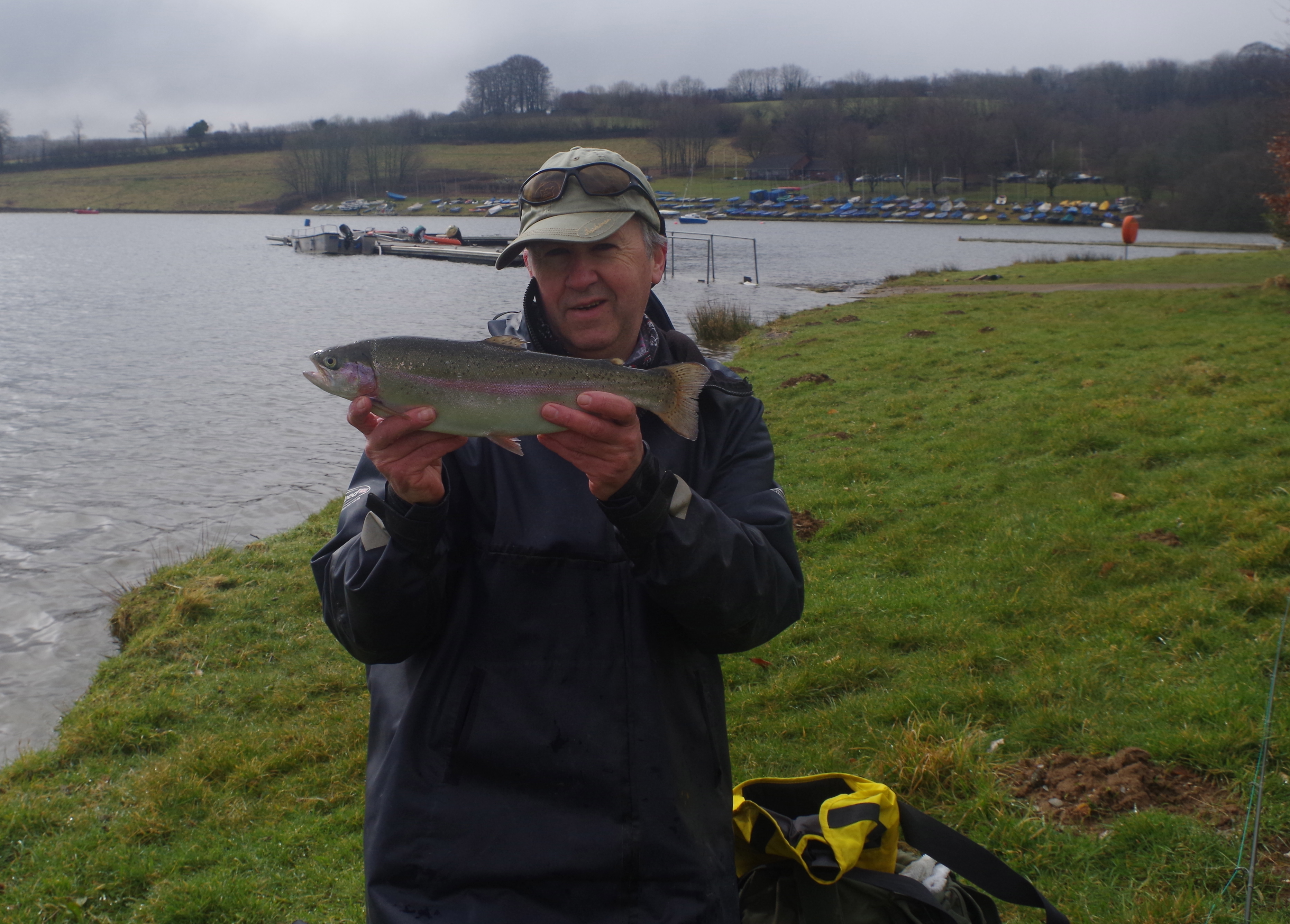
Mark and I chatted for a while on fishing excursions for both shark and salmon swapping stories of our adventures and lamenting the sad decline of salmon catches over recent seasons.
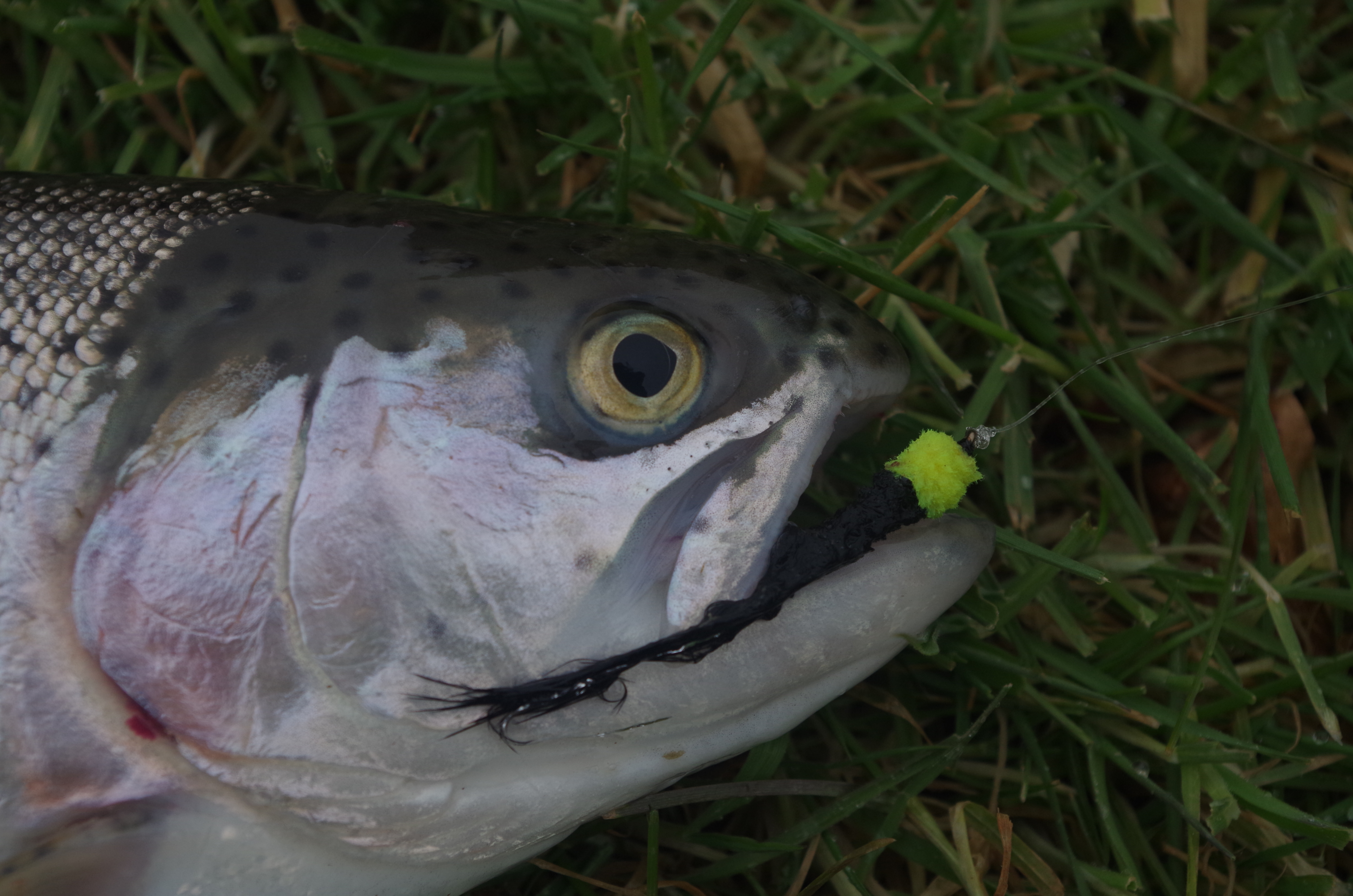
I resumed fishing after this short break swapping to the intermediate line with the black lure on the point and an orange blob on the dropper. This allowed me to slow the retrieve down and it wasn’t long before another rainbow slammed into the lure. The next hour saw me hook one or two rainbows that came adrift, one a good fish that could well have pulled the scales to four pound plus. I also banked four rainbows ending with a fine fish of 3lb 8oz that pulled far harder than the scales indicated.
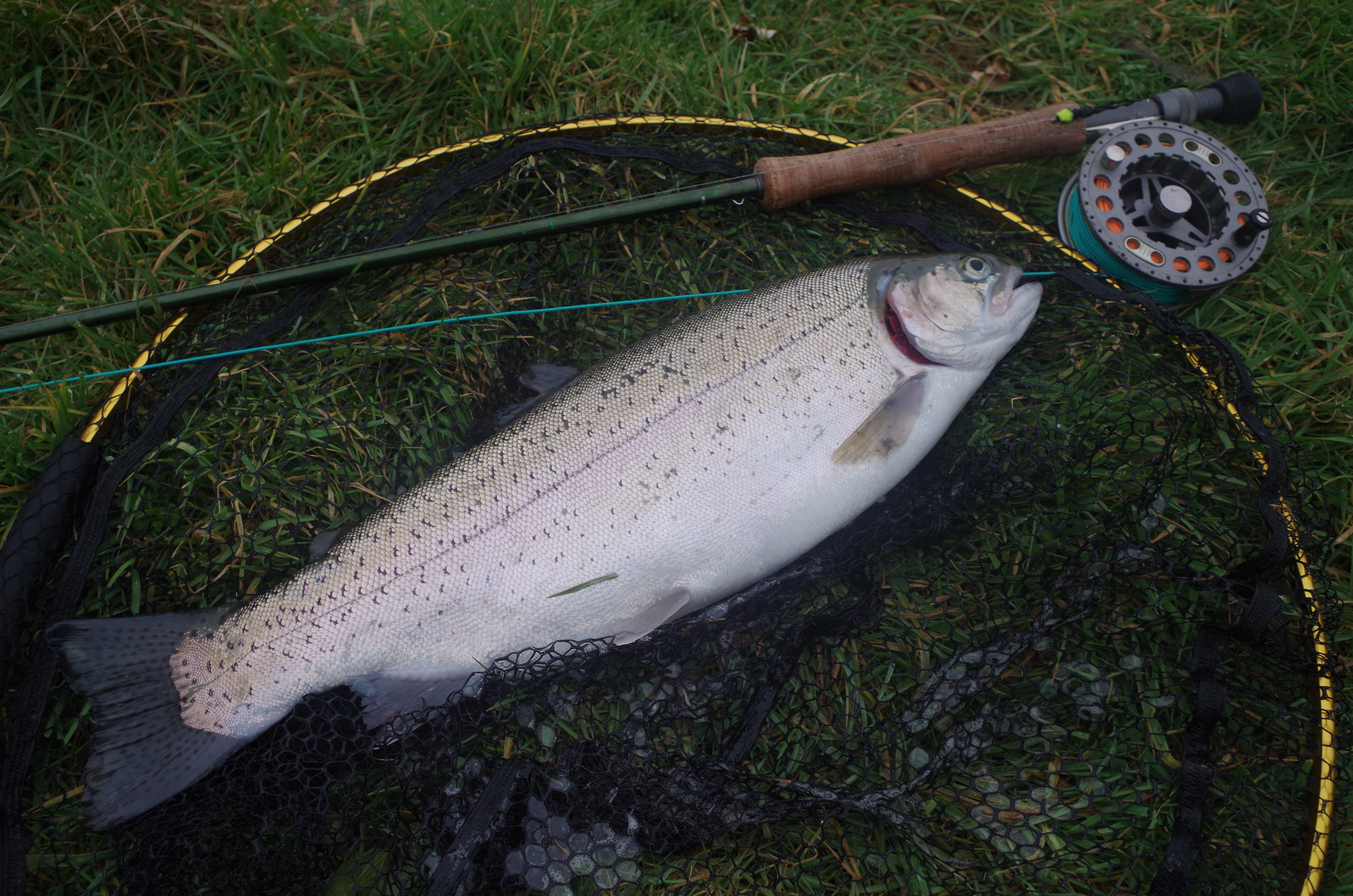
I returned to he fishing hut with a pleasing bag to weigh. Mark had intended to cast a line with me for a while but a damaged rod had kept him from the water. He was pleased to accept my offer to have a few casts with my rod and we wondered back to the water s edge to get a few more pictures. Mark’s wife Trudy joined us and I asked her if she fished to be told that she did not fish now but had once caught two salmon from the Exe illustrating that old adage that women often have an uncanny knack of tempting salmon.
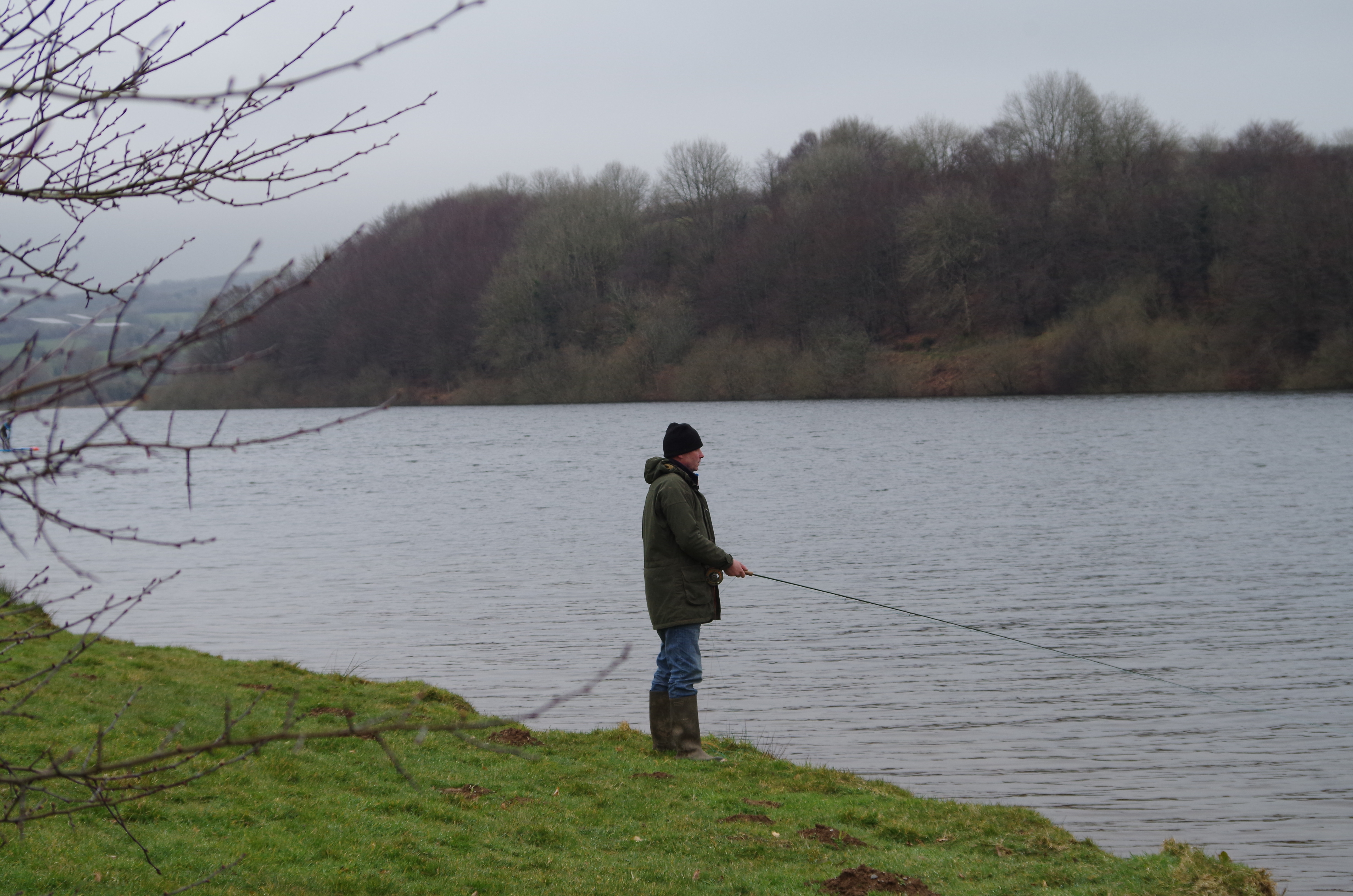
Mark enjoyed half an hours fishing making contact with several trout that refused to stay on the line for more than a second or two. With fish to attend to back at the farm Mark had to leave to prepare for deliveries of fish to venues in the Midlands.
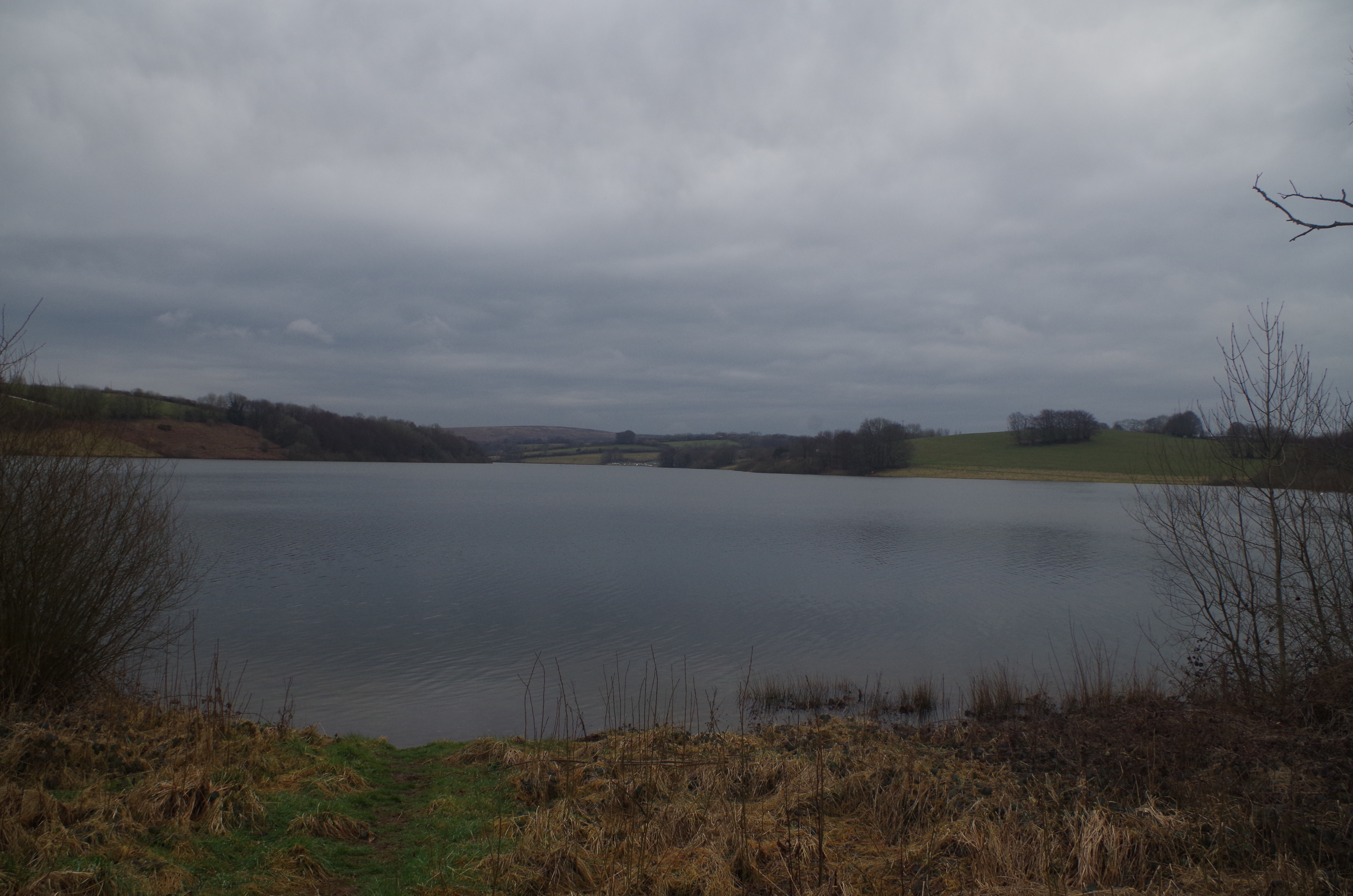
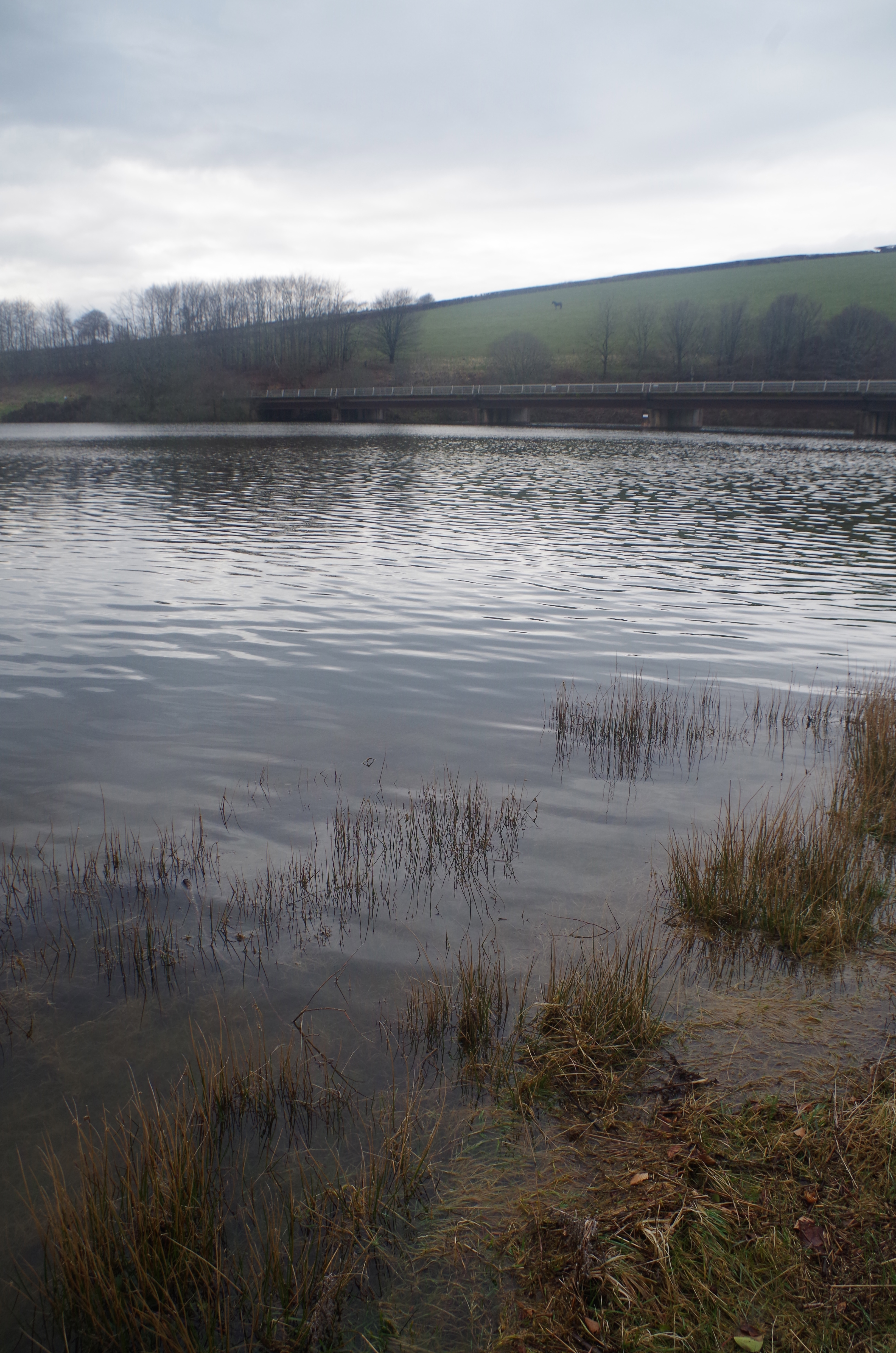
I captured a few images of the lake in its rather stark early spring state. When I return in a few weeks’ time swallows will be swooping over the water and fresh green foliage will decorate the trees. The trout will be sipping flies from the surface and my floating line will tighten at that glorious moment of deception.
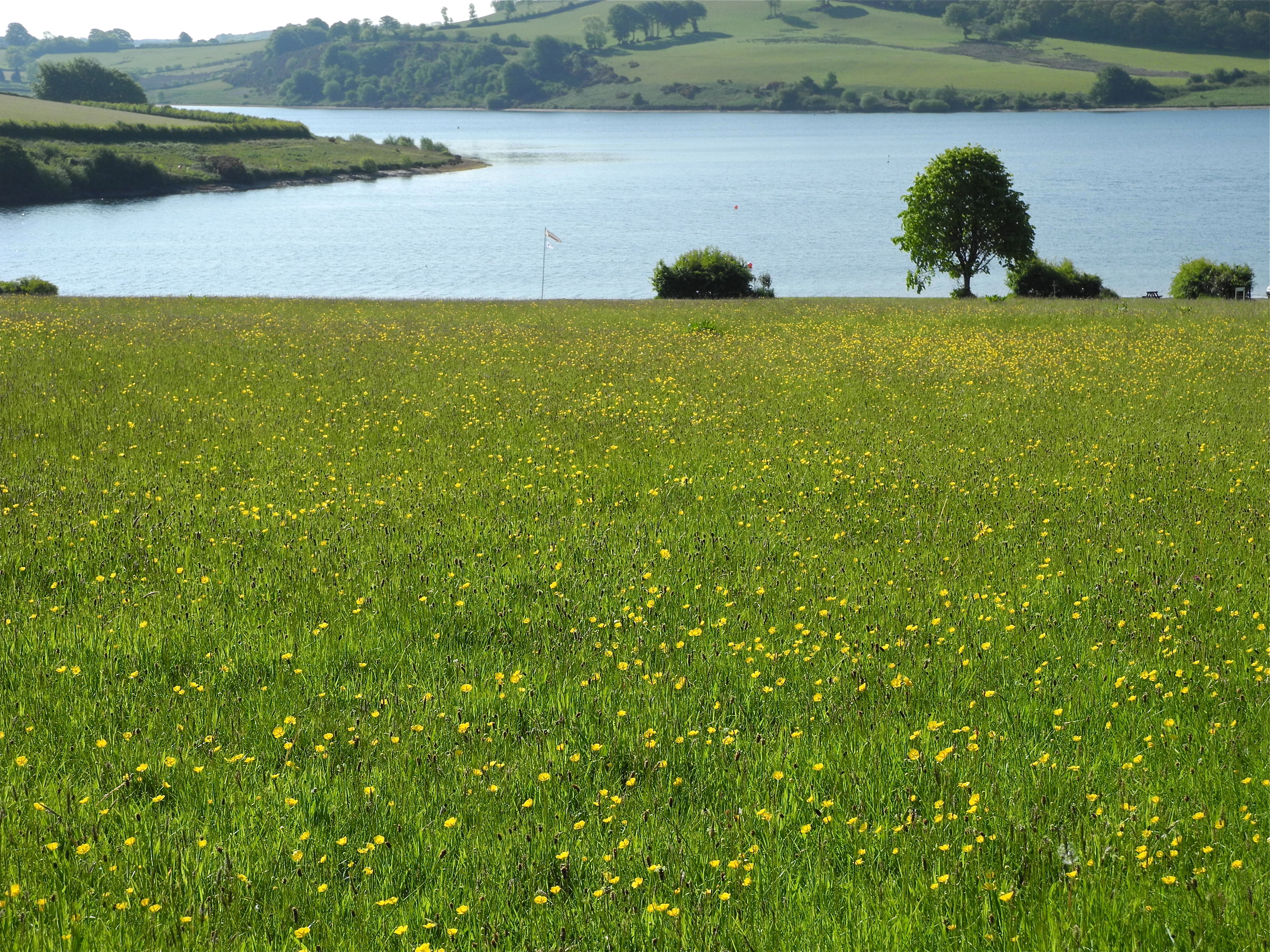
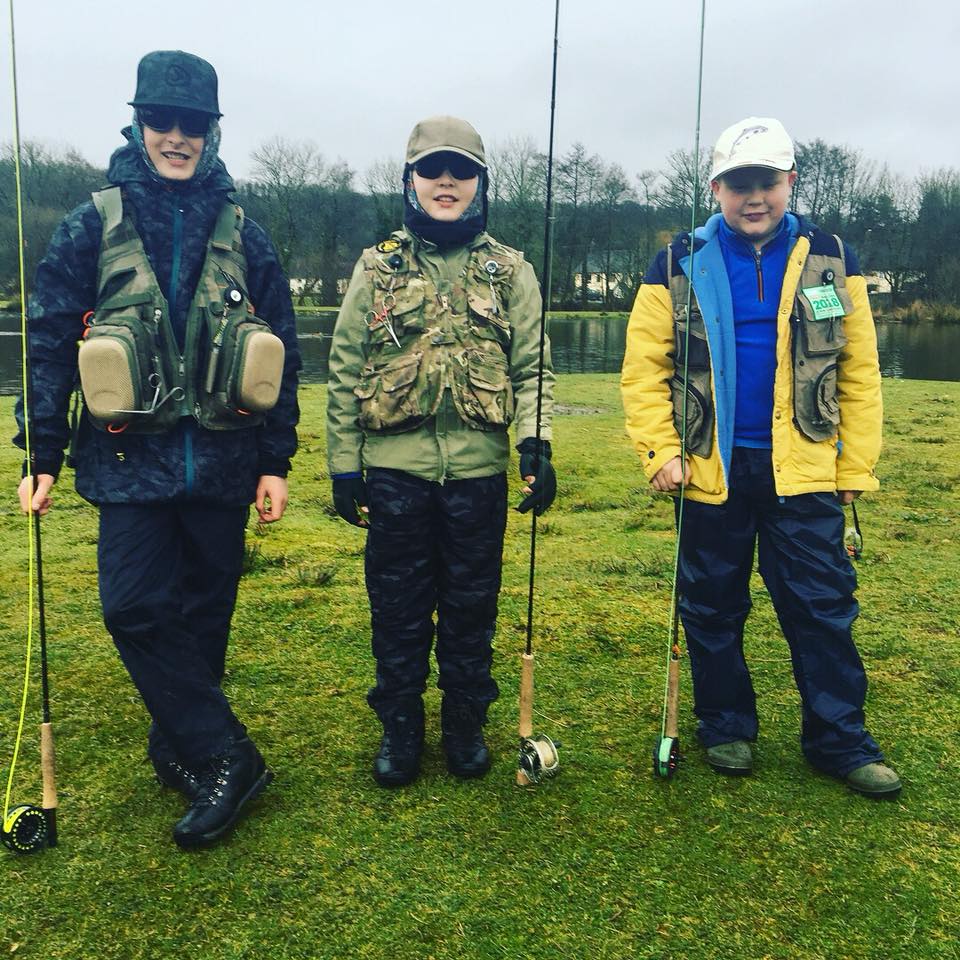
Nick Hart was pleased to post the latest news from the Troutmasters event at Exe Valley where Nick was super impressed by “these young lads competing as juniors and all helping one another out. Sam in the yellow had his first 2 fish within 7 minutes!!! We just need more of them …..”
It is imperative that we encourage as many young anglers as possible into angling to enjoy a lifelong pastime that is proven to be for good mental health, social interaction and awareness of the natural world.
BIG congratulations to junior winner James Mockridge with 5 fish for 13lb including a 1 hour time bonus and senior winner Phil Duckett in his first comp with 5 fish and a 2 hour bonus for 16lb. And finally 9 year old Max Mockridge & 10 year old Sam Shepherd both got 4 fish each and weighed in at 9lb 12oz to tie second place!
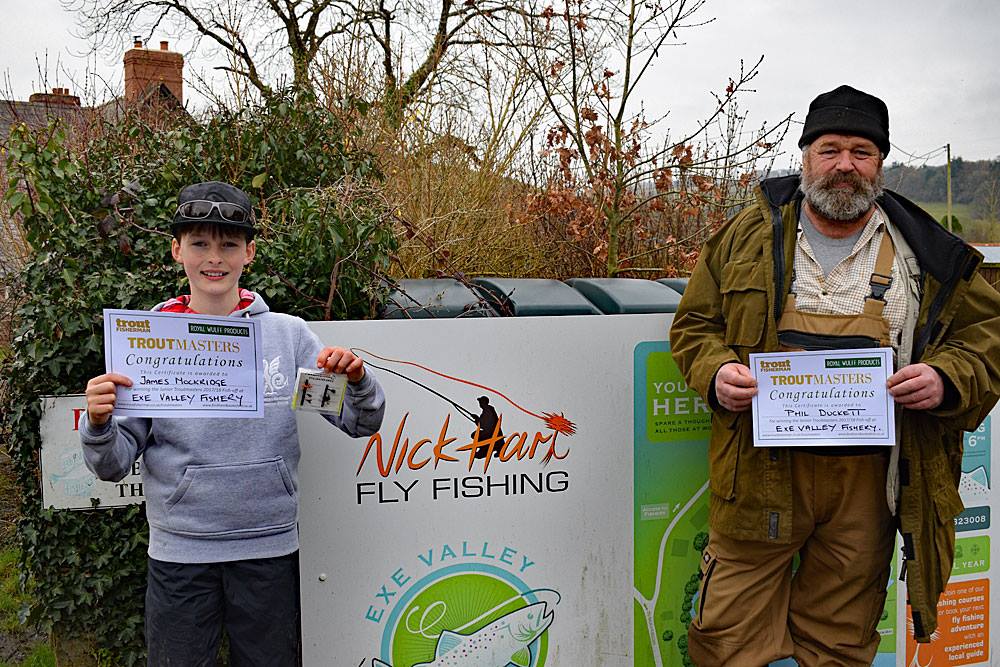
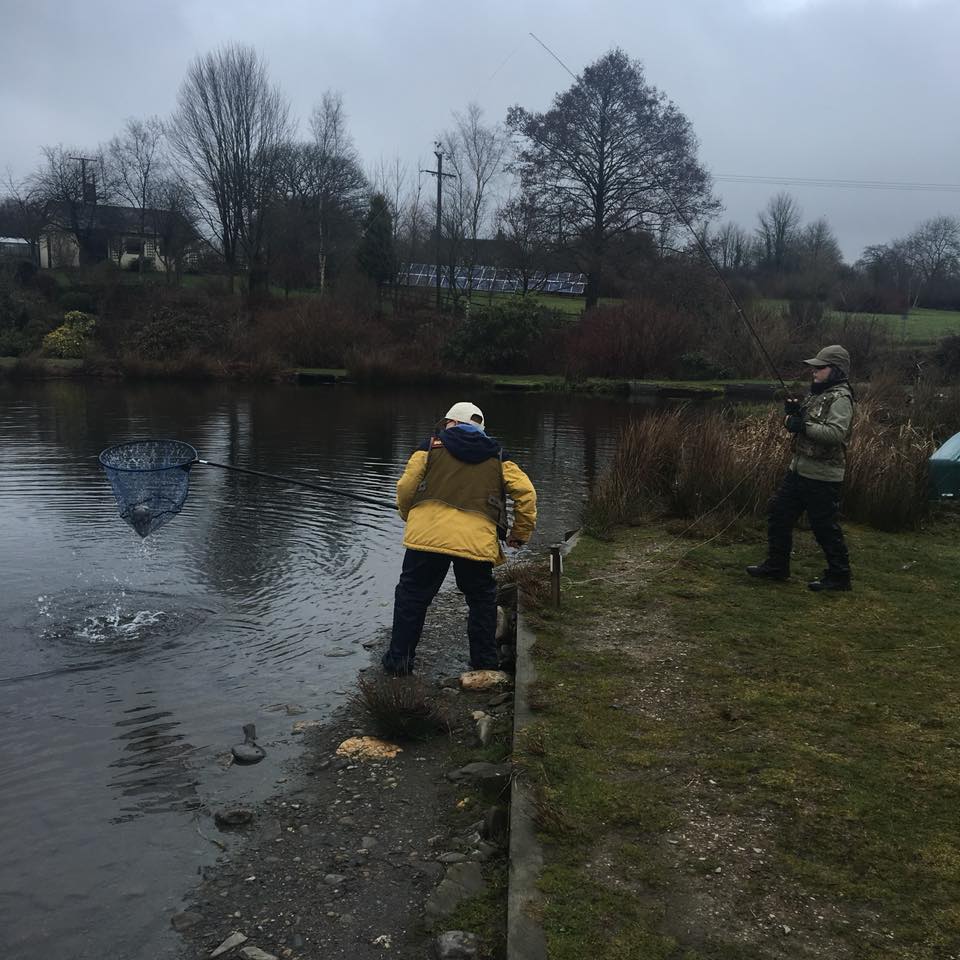
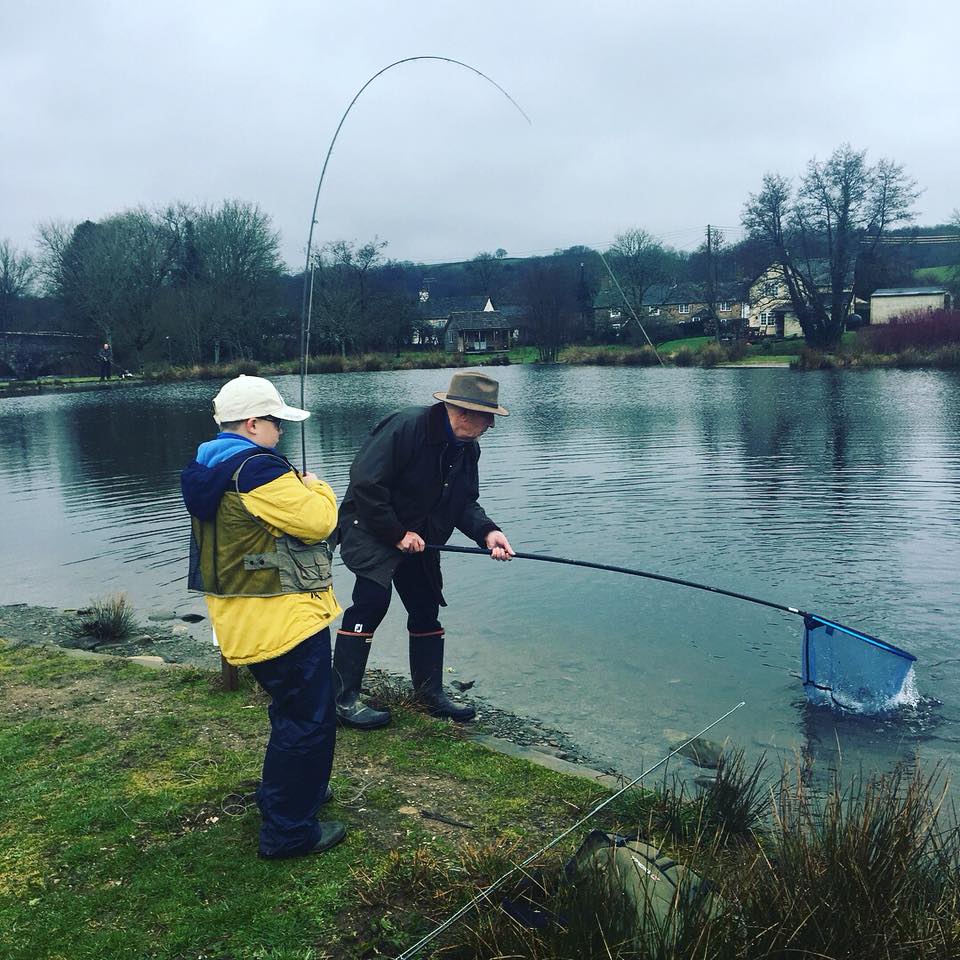
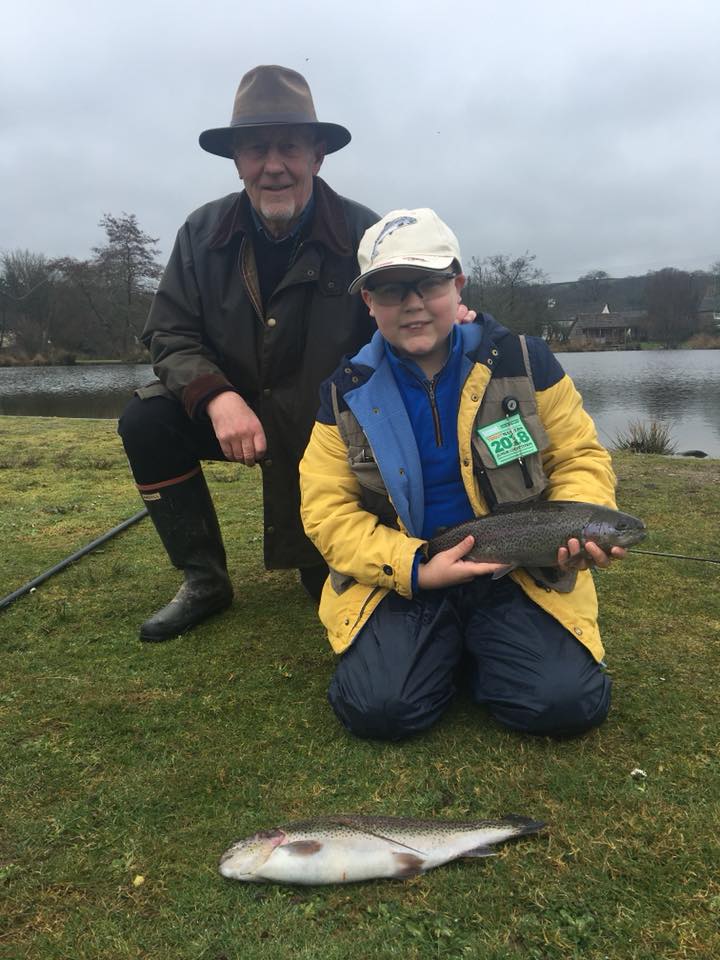
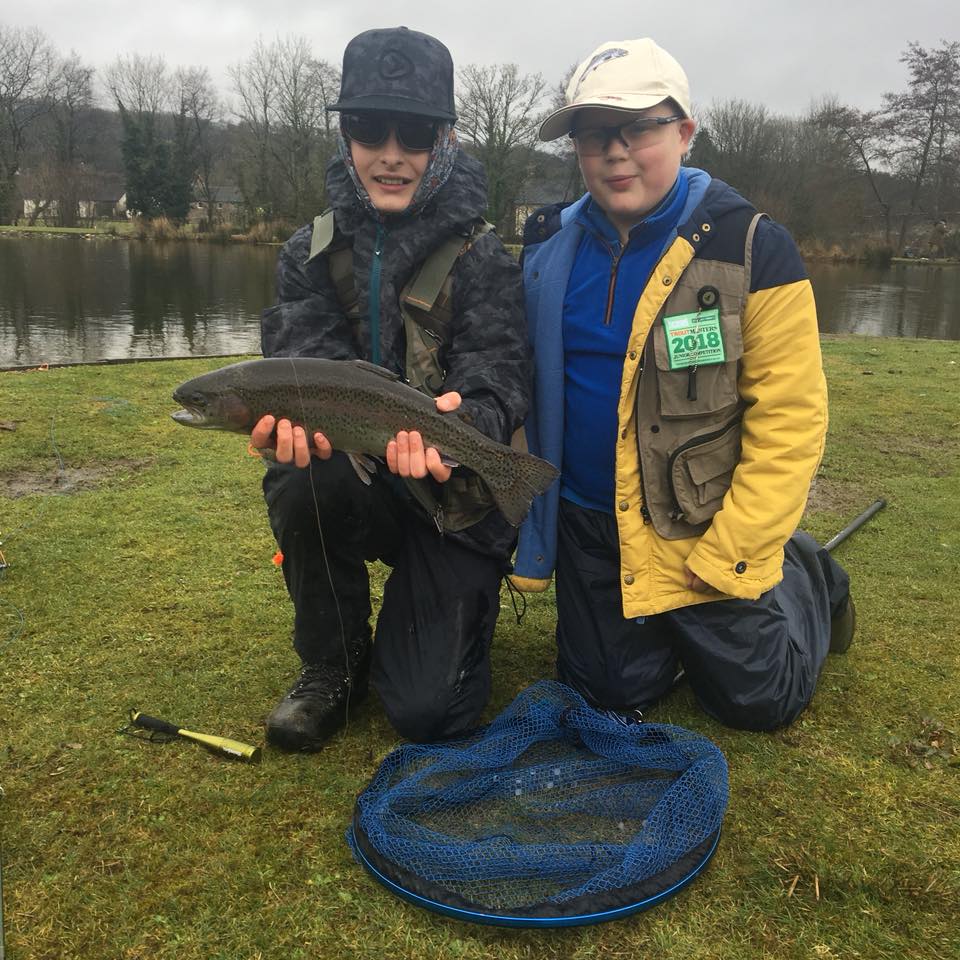
Wimbleball Reservoir Opens for Fly Fishing after a significant stocking under the management of new Fishery Manager Mark Underhill.
The first stocking at Wimbleball 2018 saw the introduction of 300 fully finned Rainbows up to 4lb with another 4000 to follow before opening day on March the 23rd. Day Tickets for a five fish limit cost £25 which is excellent value from the look of the fish being stocked.
For details and to book contact Mark Underhill on 07758561412 or email :- [email protected]
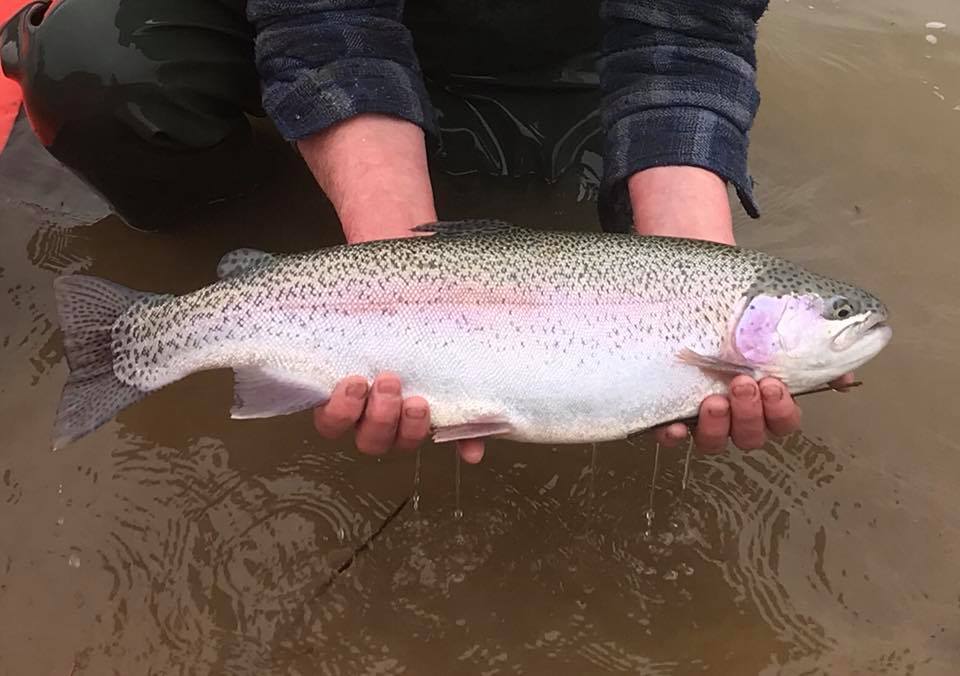
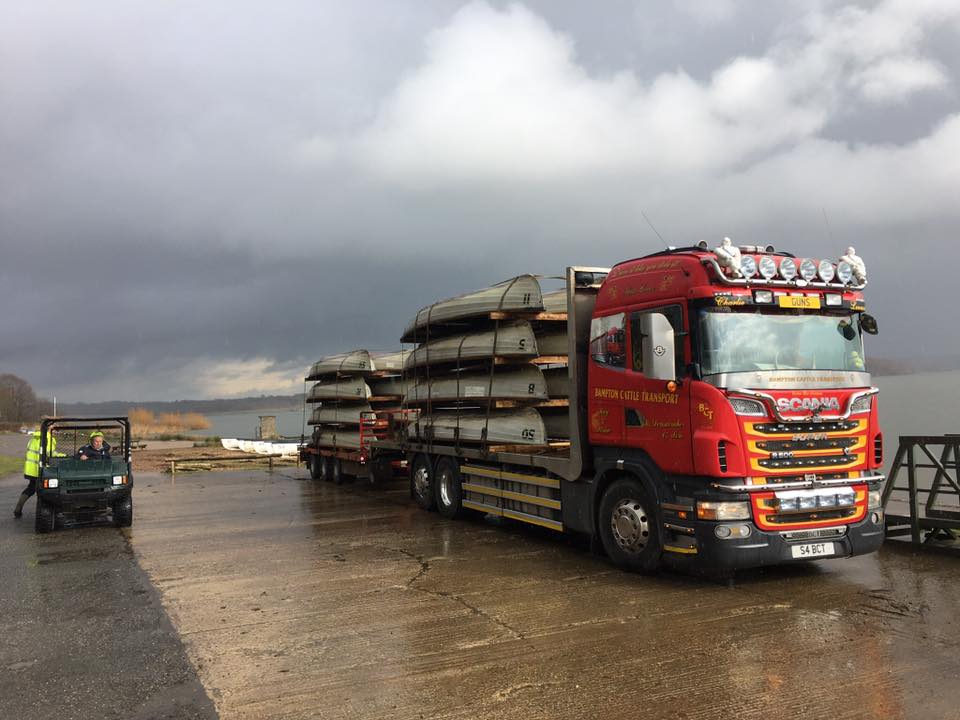
A delivery of boats for use at Wimbleball in the coming season.
Exe Valley is fishing well as spring arrives as this latest report from the fishery illustrates.
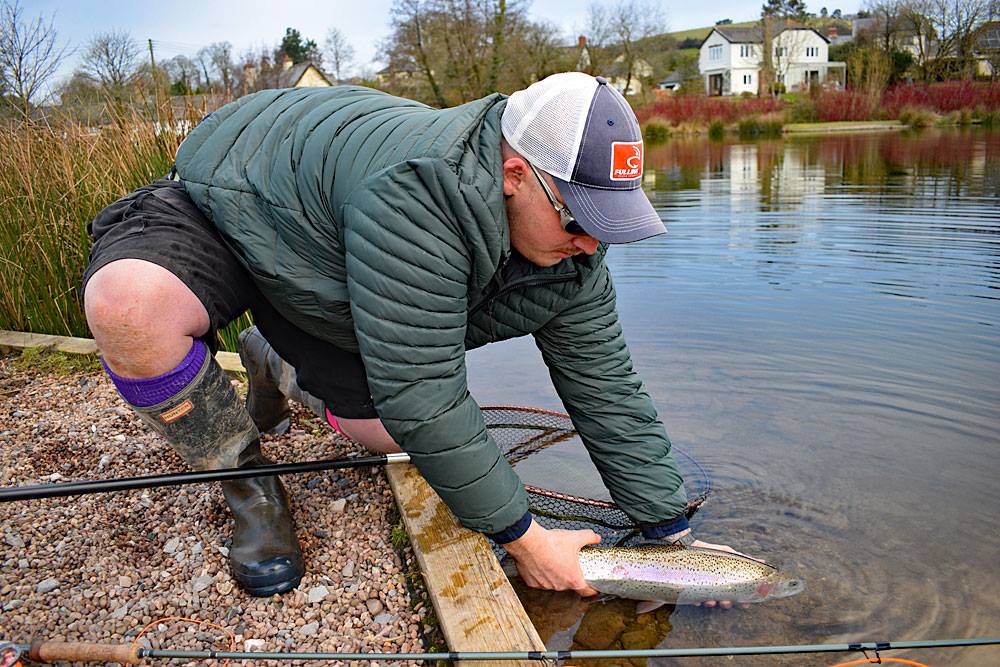
Reading from the returns archives Mr Tomkins recently tried a sporting ticket and worked nymphs for 4 fish over a few hours before switching to a stripped Blob which gave him another 5 fish in just half an hour.
Other returns mention the depth of the fish with the word “deep” used consistently along with “cold” including Mr Hobdens comment which made us chuckle “Bloody Freezing!! But good sport!” There is no doubt that wrapping up warm is required to enjoy a day at Exe Valley but if you put in the effort the chances are you will be rewarded with some action.
Mr Hobden banked 4 fish during his chilly session, but John Slaven had an even more fruitful day with 5 taken and 4 released, noting that it had been a “Cold day but worth it. Fantastic!” Johns bag tipped the scales to 15lb 2oz with a best fish of 3lb 2oz
John will hope for an equally impressive bag in just over a weeks’ time when on Sunday 18th March Exe Valley will host its annual Troutmasters Fish Off to determine who will head to the final later in the year. This event is already well signed up with around 15 anglers attending but if you have an invite and have yet to contact us, there is still time, if you are quick! Please note that the fishery will be closed to regular day tickets on 18/03/18 until after the match which is due to end around 2pm.
If you are going to practice beforehand or if you are just heading to the fishery for a pleasure day it would be well worth packing Blobs, Snakes, Blue Flash Damsels, Apps Worms and a few buzzers. Floating lines with long leaders (fished slow) will work well but in recent weeks intermediates and medium sinkers such as the Di-3 have been well worth trying.
And to round up this catch report please note that Lobbs Lake will be open by the end of the month (in time for Easter) with further details regarding the fishing that will be available on this venue posted next time.
Many thanks for reading and look our for more news soon.
For more news & pictures please check out our social media sites, Exe Valley Fishery Facebook & Exe Valley Fishery Instagram